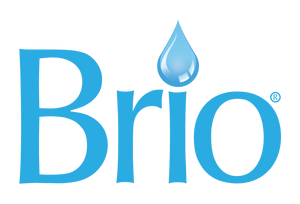When you want clean, fresh drinking water, you likely think about “filtered” water — or maybe the word “purified” comes to mind. Perhaps you use these terms interchangeably?
Either way, if you are in the market for better-quality water at home or the office, you will probably come across these words while looking for a solution. Know that the words do have different definitions.
While both options help improve water quality, you may prefer one over the other. This guide compares water filters and water purifiers based on what each option removes and the available home water filter systems.
How Does a Water Filter Differ From a Water Purifier?
The main difference between a water filter and a water purifier is what they remove.
Water Filter

If you have a sediment, carbon, or combination filter, it will remove rust, dust, chlorine, and volatile organic compounds (VOCs). However, it will not target viruses and bacteria (unless you invest in an ultrafiltration water filter). For example, four-stage systems include sediment, pre-carbon, ultrafiltration, and post-carbon filters.
Water Purifier

A water purifier is often part of a larger water filter system. You need a sediment and carbon filter to remove physical impurities and chlorine. This step will improve your water's taste and overall quality. To further purify your water, you need an additional system, such as reverse osmosis (RO) or UV light solutions.
Which Option Is Best?

The best option for you will depend on what you want to target, your budget, maintenance considerations, etc.
The first step to deciding which is best will involve a water quality test. You can conduct water quality tests at home to identify what contaminants are present in your water.
A sediment water filter is an ideal solution when you want to remove physical impurities (sediment, clay, or dust). When you want to remove chlorine's smell and taste from your drinking water, you'll need a carbon filter in your filtration system. A 2-stage system is ideal for these applications.
Purification solutions are best for the highest quality water in your home. These systems remove dissolved solids, heavy metals, and other pollutants that can harm your health. The most advanced systems combine RO, UV light, and ultrafiltration technologies. If you want to remineralize your water following RO treatment, you can install a Brio Alkafuse Drop-In Alkaline Filter.
Water Filters and Purifiers: Advantages and Disadvantages

The end result is the most obvious advantage of purification systems over water filtration systems. Filtered water will be less cloudy and will smell and taste better. However, your water could still contain several contaminants. Purified water targets pollutants and impurities that could threaten your health, something that a sediment filter does not do. Purifiers are often long-lasting and may require less maintenance, depending on the system. For example, an RO filter can last up to two years.
The downside? Water purification systems are often more expensive and tend to be more complex to install. However, they remain an ideal solution if you live in an area where contaminant levels are a concern. Discuss your needs with a water filtration expert, especially if you require a whole-house system. In this case, you may need a multi-stage system combined with a UV light. Test your water to pinpoint the best option.
This leads us to the advantages of a water filter over a more complete purification system. Water filter options are often smaller, more affordable, customizable, and easy to install. You will notice an immediate improvement in the taste and smell of your drinking water, especially if your supply has high chlorine levels.
The downside? Unless you invest in ultrafiltration home water filter systems, you will not remove many other concerning contaminants. You will not target bacteria and viruses, and regular maintenance is required.
Brio Offers Filtration and Purification Options

Brio offers solutions for all use cases and preferences. If you want to remove sediment and chlorine, consider 2-stage filtration systems. A 3-stage water filtration system is recommended to achieve greater purification.
But for the highest quality, you'll want to invest in a 4-stage RO or ultrafiltration system.
Learn more in this water filtration system guide and browse all filter systems to select the best option for you.




